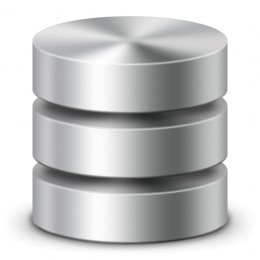eDB360: 360-degree comprehensive report on an Oracle database

Overview: eDB360 is a free tool that provides a 360-degree view of an Oracle database on the Cloud or on-premises. Its output can be used as a foundation for a database health-check, a performance evaluation, or to collect resources utilization needed for a sizing and provisioning plan. Of course it can also be used to simply get a glance of an entire Oracle database.
With eDB360, a user with limited access can acquire a good understanding of an Oracle database without having to log into the server directly. This capability is of great value to developers, system administrators, 3rd party consultants, or any remote user with limited access to an Oracle database.
eDB360 tool is database centric. Notice that in case of RAC database(s), it only needs to be executed on one node and it gets information about all of them. eDB360 works on Oracle 10g to 12c databases. eDB360 works on Linus and UNIX systems. For Windows systems you may want to install first UNIX Utilities (UnxUtils) and a zip program, else a few OS commands may not properly work.
Each execution of eDB360 may take up to 24 hours, thus it is recommended executing it overnight or over a weekend. Test eDB360 on a lower environment before executing on Production. Since eDB360 execution time is a frequent concern, a blog post explains how to diagnose cases where eDB360 takes long to execute.
For other FAQ or more information about eDB360, check links below or simply Google: eDB360.
Note: To execute this eDB360 tool, the database should be licensed to use at least the Oracle Diagnostics pack (else the output is very small and of little use). If the database is licensed for both the Tuning and the Diagnostics pack, then respond with a “T” to the first execution parameter. This tool has an optional second parameter, which allows to specify a custom configuration filename. This second parameter is seldom needed, so when asked to enter such filename, simply hit the “enter” or “return” key, unless of course you want to customize an aspect of eDB360 (advanced mode).
Links:
- Download latest release
- Readme included in tool
- Blog post: eDB360 takes long to execute
- Frequently asked questions (FAQ)
Instructions steps:
- Download tool from link above.
- Copy zip to server where tool will be executed, and unzip there.
- Navigate to master directory and connect into SQL*Plus (use an account that can read from the data dictionary).
- Execute SQL script edb360.sql. Pass value “T” as the first parameter if the database has the Tuning pack license, or “D” if it has the Diagnostics pack license (if having both licenses then pass “T”). For most cases, simply hit “enter” to skip the 2nd parameter, which is optional and it is designed to configure eDB360.
- Provide to requestor the compressed output file: edb360_<NNNNNN>_<NNNNNN>_YYYYMMDD_HH24MI.zip.

What is the difference between edb360 ans SQLd360?
jimmybrock
December 18, 2015 at 1:30 pm
edb360 is for the entire database and sqld360 is for one SQL
Carlos Sierra
December 21, 2015 at 12:18 pm
[…] diagnose the system in your absence. If you are very fortunate, you may even get them to execute eDB360 for […]
Working with Oracle trace files using TKPROF | Jon Adams, OCP, MCTS
May 26, 2016 at 11:02 am
Hi Carlos,
I think that I found something to fix in the 1e.69. Database Size on Disk report (edb360 v1616).
Lines like:
WHEN s.bytes > POWER(10,15) THEN ROUND(s.bytes/POWER(10,15),3)||’ P’
But, I think that the right expression is ../POWER(2,50).
I mean, change all the POWER expression to base 2.
And it could be a little better.
Greetings,
Daniel Calderon
September 15, 2016 at 11:33 am
Actually it used to be power of 2 on edb360, but for space on disk the proper measure is poser of 10…
Carlos Sierra
September 15, 2016 at 1:24 pm
Does edb360 support to run in parallel using multiple connection to database to reduce the runtime ?
kal
October 9, 2016 at 8:20 am
Nope, and that is intentional. Most clients are concerned that eDB360 would eat up lots of resources, and it does not because it executes serial by design. Under which circumstances would you need to rush it?
Carlos Sierra
October 11, 2016 at 9:19 am
[…] Hesse explains well some important statistics on Exadata. For some time now, eDB360 includes a report on Smart Scan efficiency, which is nothing but a Google Chart on top of […]
Smart Scans efficiency chart for Oracle Engineered Systems | Carlos Sierra's Tools and Tips
November 8, 2016 at 10:26 am
do you know if edb360 can run on oracle solaris supercluster
benoit mandeville
December 28, 2016 at 4:02 pm
indeed
Carlos Sierra
December 28, 2016 at 5:51 pm
Carlos,
I have been using sqlt and I came across this recently.. It’s amazing set of scripts!!!
Dharmesh
Dharmesh
February 13, 2017 at 2:23 pm
cool!
Carlos Sierra
February 13, 2017 at 5:10 pm
[…] eDB360 has always worked under the premise “no installation required”, and still is the case today – it is part of its fundamental essence: give me a 360-degree view of my Oracle database with no installation whatsoever. With that in mind, this free tool helps sites that have gone to the cloud, as well as those with “on-premises” databases; and in both cases not installing anything certainly expedites diagnostics collections. With eDB360, you simply connect to SQL*Plus with an account that can select from the catalog, execute then a set of scripts behind eDB360 and bingo!, you get to understand what is going on with your database just by navigating the html output. With such functionality, we can remotely diagnose a database, and even elaborate on the full health-check of it. After all, that is how we successfully use it every day!, saving us hundreds of hours of metadata gathering and cross-reference analysis. […]
eDB360 includes now an optional staging repository | Carlos Sierra's Tools and Tips
February 19, 2017 at 8:43 pm
[…] a point, eAdam is similar to eDB360; both access the Data Dictionary in order to produce some reports. The key difference is that […]
eAdam | Carlos Sierra's Tools and Tips
February 23, 2017 at 1:39 pm
[…] many of you know, eDB360 is a free tool that provides a 360-degree view of an Oracle database without any installation. A […]
eDB360 new features (March 2017) | Carlos Sierra's Tools and Tips
March 25, 2017 at 6:51 pm
[…] many of you know, eDB360 is a free tool that provides a 360-degree view of an Oracle database without any installation. A […]
eDB360 new features (March 2017) | Carlos Sierra's Tools and Tips
March 25, 2017 at 6:51 pm
There is a comprehensive SQLTXPLAIN book from Apress , when do we get one on eDB360?
ricky jon
April 24, 2017 at 6:42 am
I haven’t thought on that… Thanks for the suggestion.
Carlos Sierra
April 24, 2017 at 6:44 am
[…] “edb360” tool is the product of a collaborative effort of some very smart guys, and me. Special […]
Meet “edb360”: a free tool that provides a 360-degree view of an Oracle database | Carlos Sierra's Tools and Tips
June 10, 2018 at 8:22 pm
[…] we are very happy to release SQLdb360, a new tool that merges together eDB360 and SQLd360, under a single […]
Introducing SQLdb360: merging eDB360 and SQLd360, while rising the bar to community engagement | Carlos Sierra's Tools and Tips
June 11, 2018 at 7:01 am
HI,Carlos Sierra
Why is the graph in the generated edb360 report not displayed?Blank is displayed in the figure.
c.jon
November 11, 2020 at 7:52 pm
There is something on it that Google Charts does not like. It could be a line with all rows with 0, or nulls where a number is expected. You may want to open the report with a text editor and look for irregularities on the data.
Carlos Sierra
November 12, 2020 at 9:08 am
[…] I always start a job like this using eDB360. You can check more details about this amazing tool here. […]
High System Load with Low CPU Utilization. How? | Vinicius DBA
September 25, 2023 at 8:20 am